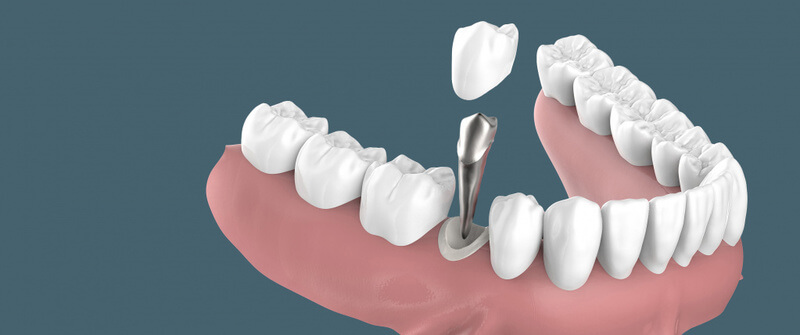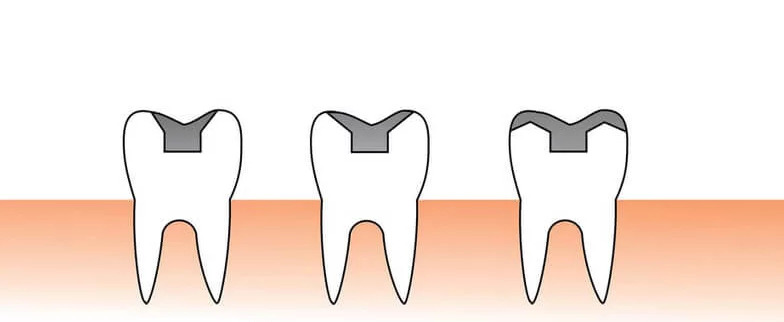Inlay-Retained Prosthesis: Advantages and Disadvantages

Contents:
Inlay Core: Advantages and Disadvantages
An inlay core is a fixed dental prosthesis for tooth restoration. Inlays are required when the destruction of the crown part of the tooth is more than 1/2. They are fixed in the root canals and become the basis for dental restoration. The primary condition is the integrity of the root system. What is an inlay core, the advantages and disadvantages, when the placement is possible, and in what cases an implant is placed? The experts answer these and other questions in the article below.
What Is an Inlay Core?

An inlay core is a supporting structure attached to the tooth’s canal part to a cement material. In the case of a badly decayed tooth, it helps create the basis for attaching the future crown.
Types of Inlay Core

There are mono- or multi-canal inlays depending on the number of tooth roots. They can have a one-piece or multiple pieces. A pin metal inlay consists of a central part that imitates the crown part of the tooth and pins to fix it in the dental canals. The one-piece design is used for a single-rooted tooth or a two-canal tooth with parallel root canals. The multiple-pieces design can be used to restore completely destroyed multi-root teeth. Otherwise, it is not recommended.
The inlay core can be metal and metal-free depending on the manufacturing material. The former is made from cobalt-chrome alloy or gold. Metal-free inlays are made of ceramics. The most popular are zirconium and ceramic inlays. Zirconium dioxide inlay restorations have several advantages:
- high strength;
- hypoallergenic and biocompatible with the human body (bioinertness);
- aesthetic appearance – inlays are not visible through the ceramic crown.
When restoring teeth along the smile line, metal-free inlay cores are used.
The doctor assesses the oral cavity condition and considers the degree of chewing ability and the patient’s financial capacity before performing the aesthetic restoration.
Inlay-Retained Crown: Indications
The inlay core is indicated in the following cases:
- severe tooth destruction with the preserved and stable tooth roots;
- inability to fix the crown in any other way;
- the need to strengthen the tooth before subsequent prosthetics.
Before aesthetic restoration, the doctor assesses the condition of the oral cavity and considers the degree of chewing load and the patient’s financial capabilities.



